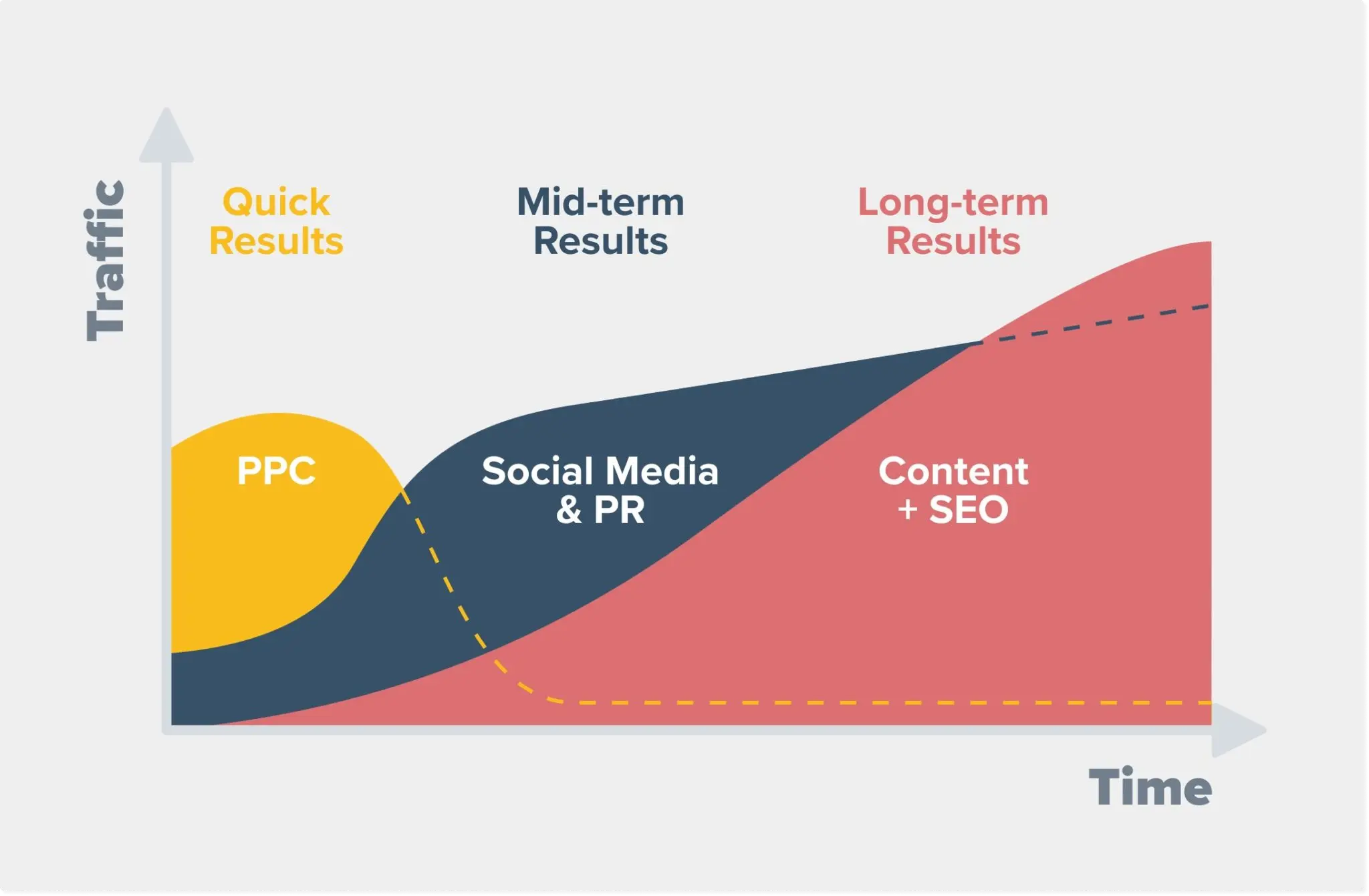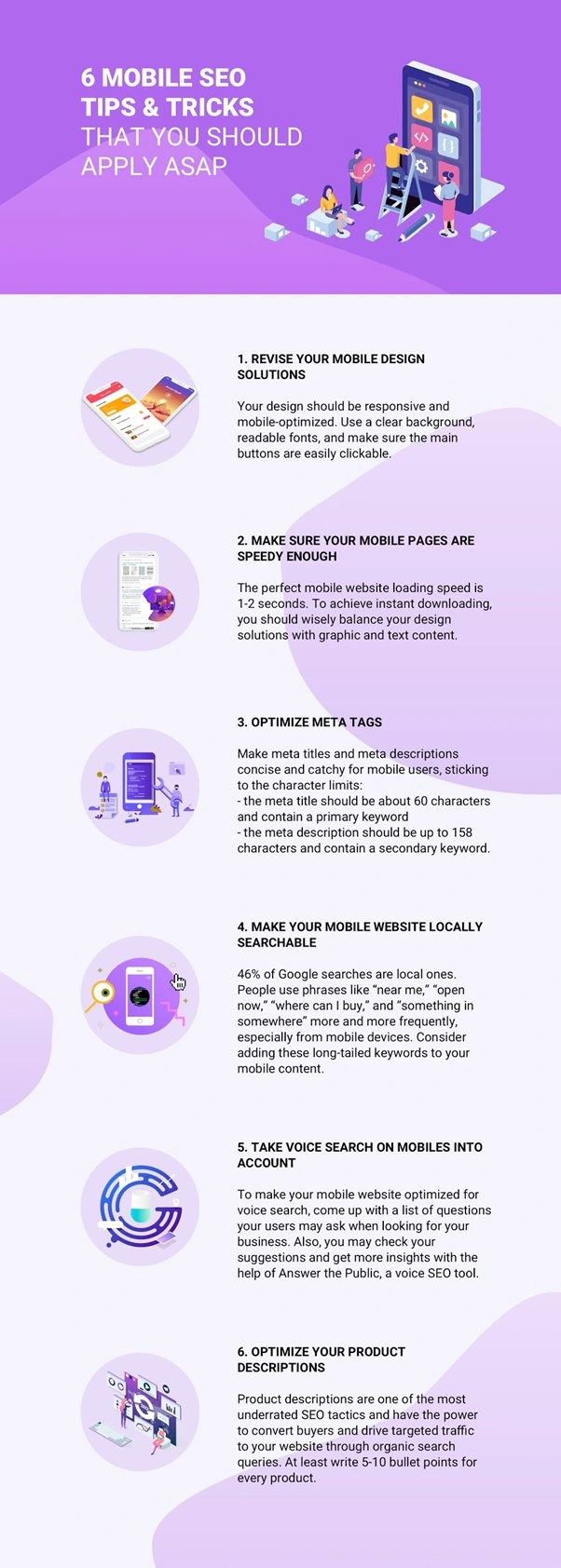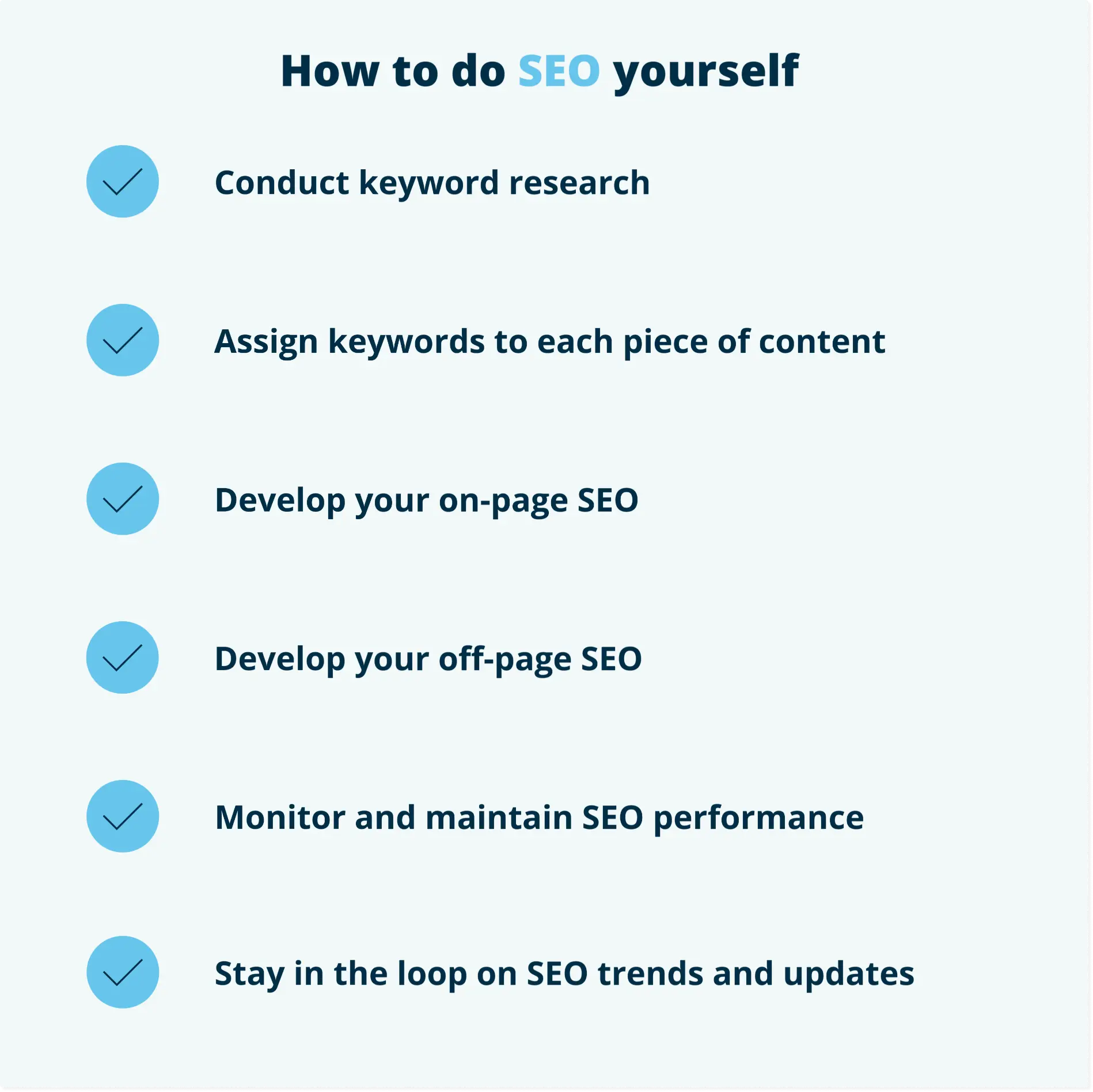Why SEO is Worth the Investment in 2025
1. 5 Reasons to Invest in SEO
2. How Much Should You Invest?
3. Can You Do SEO on Your Own?
Useful tools:
1. Newoldstamp - Email signature marketing
2. Mailchimp - Email builder and sender
3. Reply.io - Personal email outreach, calls, and tasks
4. Mailtrack - Email link opens tracking
5. Canva - Online tool for making designs
Businesses may be bracing for a recession in 2025. Banks continue to raise interest rates, global growth is slowing down, and food and energy prices are up. Economists are not in complete agreement about the downturn, but a recent report points to a 98 percent probability. And businesses that aren’t confident about where the market is headed may be pulling back on expenses — especially for marketing tactics like SEO.
But that’s a mistake.
SEO is worth the investment because it’s an effective practice that drives organic growth over time. Some 66 percent of the world’s population use the internet to find and learn about products or services, with Google taking up about 92 percent of the search market share.
The right SEO techniques allow your business to show up on top when your target market searches for solutions to make their lives easier. As one of the best basic marketing strategies, your business must consider SEO an investment rather than a cost.
5 Reasons to Invest in SEO
1. SEO works for your business goals
Optimizing your website, social media pages, landing pages, and online presence allows you to achieve marketing, sales, and branding goals.
Take, for example, Saramin, a Korea-based job platform featured as a case study on Google Search Central. In 2015, the company’s marketing team started minimal technical SEO work, like fixing crawling errors. The fixes resulted in a 15 percent increase in organic traffic. Then the team dug deeper into SEO, using Google’s tools to improve page speed, implement structured data, and remove duplicate content to provide a better user experience. Soon after, traffic jumped to 102 percent, with a 93 percent increase in new sign-ups and a 9 percent gain in conversions.

2. SEO delivers ROI
More traffic doesn’t always mean an increase in revenue. No business earns just because a user clicks on a website. That click must lead to a sign-up or an inquiry to qualify as a conversion, and conversions only count as a return on investment when it generates a sale and contributes to revenue.
For an e-commerce business, the average return on investment is $2.75 for every dollar spent on SEO work.
How do you calculate ROI for SEO?
- Track conversions in Google Analytics
- Divide conversions according to channel, paying attention to organic search and pulling data on the total amount of conversions
- Calculate ROI; most businesses use this formula: Gain from Investment – Cost of Investment) / Cost of Investment
Calculating ROI on SEO is not as clear-cut as ROI on your pay-per-click (PPC) investment. Unlike PPC, SEO has no fixed amount for organic clicks. Unlike PPC, however, the returns on SEO continue even after you stop spending.
SEO is a long-term investment; results don’t happen overnight. Initial ROI measurement, then, should be done quarterly or annually. You may not see a return on your investment until the third month, but the results contribute to the growth of your business in the long run.
3. SEO isn’t free, but it delivers long-term results
Your business showing up on the first page of a search engine results page doesn’t happen by accident. It takes a team of specialists and tools that deliver insight to give your business online visibility. So where does this idea of SEO being free come from?
Because SEO delivers organic traffic (as opposed to traffic from clicks on a paid ad that appears in the search results), some people may consider search optimization “free.” If you compare it to PPC/paid ads, where your business pays a small amount per click, SEO looks like it’s “free.”
With PPC, you can get instant results because you’ll appear at the top of the search results, even above position 1 of the organic results. However, your traffic stops when you stop paying for the ad to appear. Potentially, a PPC campaign can deliver $2 for every dollar spent on paid ads, or an ROI of 200%.

source: Factory Pattern
SEO, on the other hand, continues to drive traffic because your optimization results in your site appearing organically in search results. Because of this, your return on investment for SEO compounds over time. You’re looking at ROI of 275% and higher over time, depending on how long your keywords can rank (which in turn is dependent on how competitive your niche is). But you’re looking at SEO campaigns potentially delivering results years after you stop paying for it. This is what makes SEO so cost-effective as a strategy.
Even if you decide to do SEO work on your own instead of hiring a team of specialists, you’ll still be spending time on keyword research, content creation, link building, and other optimization tasks. And that is time you could be spending on building client relationships.
4. Your competition is already applying SEO tactics
Your competitors may already be using SEO, with about a fifty-fifty chance. No business wants to be out-maneuvered by the competition. If you're not applying optimization practices, you’ll likely lose market share because the competition is optimizing its website or social media pages.
If they aren’t, it’s an opportunity for your business to funnel visitors to your website and build a loyal customer base before your competition does.
Without SEO, the chances of your brand showing up on the search engine results page (SERPs) are very slim, and your competitors’ optimized sites will rank higher. And because the top 3 pages in the results page get a majority of clicks and traffic, with a marked drop in the share of clicks after the third result, not being at the top means you’re missing out on the chance to attract visitors and potential sales.
Along with SEO, using a professional email signature can help reinforce your brand with every email sent. A well-designed signature with links to your website or content can subtly support your SEO and marketing efforts, ensuring consistent engagement with your audience.
5. Mobile and local search optimization are rising
An effective SEO strategy updates as the search engines refine their algorithms in response to user needs and behavior. Part of that update focuses on mobile optimization because more than 60 percent of mobile users go online through their mobile devices. By 2025, more than 70 percent of mobile users will access the internet solely on smartphones.
But people on smartphones aren’t just exploring the internet; they’re transacting with businesses, too.
Mobile-friendly websites are crucial, especially for e-commerce businesses since 79 percent of users have bought something online through their phone. E-commerce sales from mobile devices are at $436.75 billion in 2022 and sales in 2025 are projected to reach $728.28 billion.
Mobile users also tend to search for local businesses, making optimization for both crucial to your SEO efforts. Some 76 percent of mobile users visit a local business within the day after finding them online, and 28 percent of those lead to purchases.
You're missing out on lucrative opportunities if your business isn’t optimizing for mobile and local search.
So how much would you have to spend to get these lucrative opportunities?

source: smallbizdaily
How Much Should You Invest?
Some businesses may put 5 percent to 10 percent of their revenue on SEO campaigns. Although this provides a good starting point to work with an experienced agency, you may need to budget more if you’re in a highly competitive industry.
Consider the millions of results that pop up on search engines. To get your target market’s attention, you must show up on the first page to matter. You must aim to clinch positions one, two, or three to meet your sales and revenue goals because these get the most clicks. The first organic result gets an average of 28.5 percent click-through rate (CTR), the second gets 15 percent, and the third 11 percent. Position 10 gets a 2.5 percent CTR. Farther down the results page and beyond the first page, your website’s chances of getting clicked diminish.
And taking a top position takes a lot of work, expertise, and time.
To come up with yours, evaluate three things:
- Competition (Are you in a niche market or competing with big brands?)
- Revenue (How much money are you willing to spend?)
- Goals (What do you want to achieve with SEO: branding awareness, more sales, more customers?)
Time must also be considered when you’re coming up with an SEO budget; fast results require more money because analysts, marketers, content creators, and web developers would have to work within a shorter time frame.
This is not to say that better results are always expensive. Whether you’re hiring an outside team, go with specialists who can show success with previous projects and who don’t make grand promises about delivering on your goals.
Instead of thinking about the price, consider the value you’re getting for what you’re paying.
Can You Do SEO on Your Own?
What if you optimize your website on your own? Would you save money?
The answer would depend on how you value your time; for many solo entrepreneurs, time is money. The hours and days they spend must yield some type of return because they’ve “invested” time.
If you’re willing to “invest” some of your time in SEO, it’s doable. You’ll have to learn the concepts and processes involved in optimizing for search engines.
If you’re a fast learner, you may not have to spend too much time training to do a basic audit of your site (some online tools let you check your site for SEO), for keyword research (tools automate the process), optimize for local search, and improve the backend of your site (this may call for a web developer).

source: Capterra
SEO work will consume a chunk of your time if you're not a fast learner. Instead of building your business and talking to clients or resolving customer concerns, you’ll be doing optimization work.
Ask yourself: are you saving money doing all the work yourself? And what results could you get?
Third-party SEO specialists often cost less and deliver better results than an in-house team, according to a report from Borrell. Companies that used both revealed that consulting agencies were cheaper and showed higher results than their in-house teams, with the average annual spend on SEO at $9,700 and an average rating of 3.44 against 2.82 for internal resources on the 5-point effectiveness scale.
Invest in SEO, Generate More Business in 2025
2022 has been challenging for all businesses, working against a global health crisis, price increases, changing customer expectations and behavior, and the usual demands of running a company. But if you’ve made key investments to prepare for those challenges, you can sustain the business future-proof against further external disruptions.
One of those impacting investments is SEO. An optimized online presence allows you to maintain your market position, keeps you relevant and top of mind for consumers, and helps secure your business's future revenue. Overall, an SEO investment isn’t just worth it — it’s the smart business decision.

